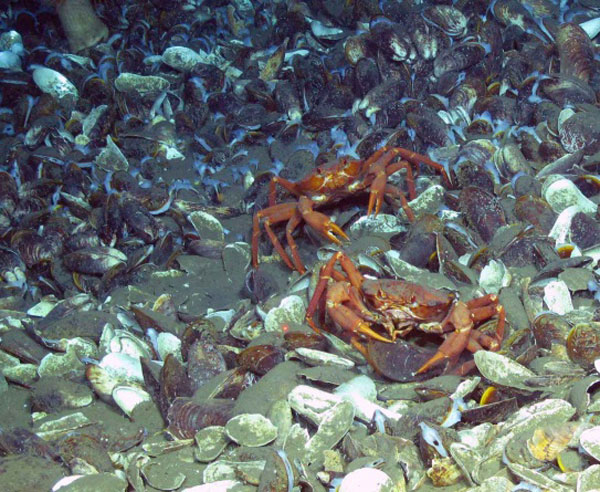
Seafloor Gas Seep Rediscovered Off East Coast

In the early 1980s, a researcher snapped some surprising photos while tugging an instrument behind a boat. The pictures showed evidence of natural gas seeping out of the seafloor, an occurrence that was unheard of off the U.S. East Coast at the time. But due to technological limitations, the researcher wasn't able to pinpoint the location on subsequent expeditions.
Picking up where the trail went cold, researchers used clues from these photographs to find the seep in a seafloor canyon off the coast of Maryland some 1,360 feet (450 meters) beneath the ocean.
Using an underwater vehicle with a sophisticated camera, the researchers spotted gas bubbles coming out of the sediment and white mats of bacteria that only grow in natural gas seeps. The site contains a host of life, including thick layers of mussels that are able to survive partially through a symbiotic relationship with methane-eating bacteria.
It is only the second known natural gas seep off the East Coast, according to a joint news release from the Marine Conservation Institute and UNC-Wilmington.
Besides clams, the researchers also found tiny spider crabs, shrimp, brittle stars and other small creatures nestled down amongst the shells, while larger animals such as eels and red crabs wandered over the surface of the bed. A red crab was seen wrestling with a large mussel, as seen in the photograph.
The researchers plan to return to the area and learn more about the ecosystem, which likely is home to new forms of life.
Follow OurAmazingPlanet on Twitter @OAPlanet. We're also on Facebook and Google+.
Sign up for the Live Science daily newsletter now
Get the world’s most fascinating discoveries delivered straight to your inbox.










